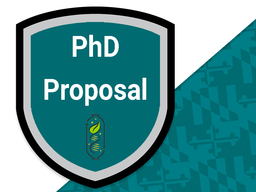PhD Proposal: Jahir Antonio Batista Andrade
FORMAT: VIRTUAL PRESENTATION
Location
Online
PhD Proposal: Jahir Antonio Batista Andrade – Online Event
Date & Time
August 20, 2021, 1:00 pm – 2:00 pm
Description
Jahir Antonio Batista Andrade, PhD Student
Advisor:
Dr. Lee BlaneyTitle:
Identifying wastewater inputs to urban streams by monitoring dissolved organic matter fluorescence and contaminants of emerging concerns
Abstract:
Sanitary sewers overflows and leaks are a common source of contamination in urban streams. These leaks can introduce raw wastewater into water bodies, leading to potential human and ecological health concerns. Tracking sewer leaks is a major challenge in urban areas because most of the leaks occur underground and are not easily identified or quantified. To address this challenge, we propose the following: (i) spatiotemporal analysis of dissolved organic matter (DOM) by excitation-emission matrix (EEM) fluorescence spectroscopy and parallel factor analysis (PARAFAC) can be used as a quick, easy, and economical strategy to screen for raw wastewater in urban streams; (ii) the occurrence and concentrations of contaminants of emerging concerns (CECs) in urban watersheds will confirm the utility of EEM-PARAFAC metrics; and, (iii) intensive studies of specific sampling sites can quantify the load of wastewater introduced to Baltimore streams by sewer leaks (urban areas) and septic tanks (rural areas).
The Objective of this research is to develop new tools to identify and evaluate wastewater inputs to urban streams from leaking sewers, SSOs, and septic tanks. In particular, the proposed research will focus on analysis of fluorescent DOM (FDOM), CECs, and other chemical indicators in two urban watersheds that do not receive wastewater effluent. I will measure these parameters at 27 sampling sites in the Jones Falls and Gwynns Falls in Baltimore County and Baltimore City.
Aim 1: Measure EEMs and generate EEM-PARAFAC models to identify sites that are potentially impacted by wastewater in two urban watersheds over long-term sampling periods. We Hypothesize that the FDOM signatures inherent to the streams (i.e., natural FDOM) differ from those in raw wastewater. The Expected Outcomes of this aim will be new FDOM parameters that constitute feasible strategies for tracking point and nonpoint sources of wastewater in the urban environment. The significance of this aim coincides with the need for quick, easy, and scalable techniques to detect and track leaking sewers, SSOs, and septic tanks that pollute urban streams.
Aim 2: Assess CEC concentrations to confirm that the proposed EEM-PARAFAC parameters from Aim 1 correspond to wastewater sources. We Hypothesize that CEC detection frequencies and concentrations will correlate with the EEM-PARAFAC parameters proposed in Aim 1, providing a validation tool to confirm whether sites are impacted by sewer leaks, SSOs, and/or septic systems. In particular, we will analyze a wide variety of CECs, including 43 antibiotics, 9 hormones, 13 UV filters (sunscreen agents), sucralose, and caffeine. The Expected Outcomes include a preliminary evaluation of CECs at rural and urban sites in the Jones Falls and Gwynns Falls for a two-year period, and holistic analysis of CEC detection and concentration patterns as a function of FDOM (from Aim 1), land-use characteristics, and hydrological conditions.
Aim 3: Conduct intensive sampling at one suburban site and one urban site that were determined to be impacted by wastewater (from Aims 1-2) to identify specific sources and quantify wastewater inputs via the EEM-PARAFAC and CEC tools. The Expected Outcomes of these tasks will demonstrate whether EEM-PARAFAC parameters and CEC concentrations measured in urban streams can be used to not only locate sewer leaks, SSOs, and septic system discharges, but also quantify the load of wastewater introduced by compromised infrastructure.
The proposed research involves aspects of environmental engineering, environmental analytical chemistry, urban hydrology, water infrastructure, and geographic and information systems. The effects of sewer exfiltration and SSOs represent major problems in North American cities, as noted by the D+ grade from the American Society of Civil Engineer’s Report Card for America’s Infrastructure. The proposed research project will lead to development of an innovative and cost-effective strategy for identification of leaking sewers in Baltimore City and other cities around the world.
Agenda:
- 12:45 pm: Meeting room will open
- 1:00 PM: 45 min presentation will be open to the public with Q&A.
- Followed by a closed session with the committee and PhD Student.
WEBEX Meeting:
